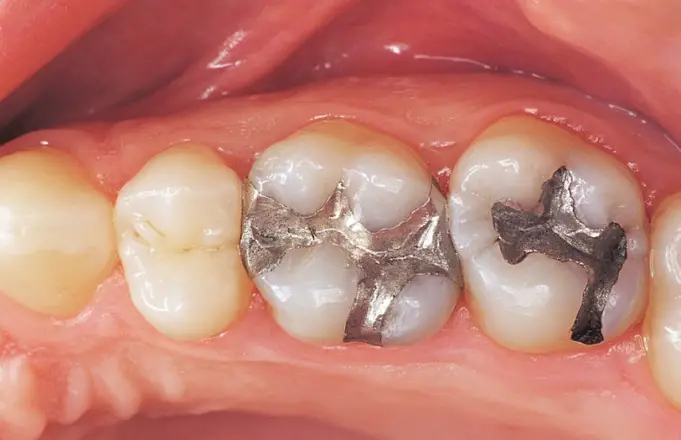For dental fillings in and near San Diego dentists can offer you a choice from two types of material. One is metallic, or amalgam, and has been around since before the Civil War. The other is the newer resin, or composite, material.
Amalgam Fillings
Amalgam fillings have a silver or darker coloring. The dentist applies the material in soft state, which hardens and builds the tooth back to its original form. They are less expensive and more appropriate for back teeth, which bear the most stress in biting.
Composite Fillings
Having the consistency of soft modeling clay, composite fillings are tooth colored and more cosmetically pleasing. The dentist carefully applies the resin then shines a blue light from a handheld instrument on the soft resin. The resulting chemical reaction hardens the resin into a strong, natural looking filling.
Nine things to consider when choosing your dental filling materials
For esthetic reasons, most patients would prefer tooth-colored fillings and would choose composites as their dental filling types, especially for the more highly visible front teeth. Likewise, dentists recommend the darker colored amalgam fillings for back teeth.
The following is brief rundown on things to consider when choosing between amalgam and composite dental filling types:
1. Amalgam is stronger
Your back teeth are where you put the most force when crushing your food. Amalgam is a strong metal and wears down less quickly than the softer composite resin filling.
2. Composite fillings cost more
Dentists charge more for composite filling work. The procedure requires far more attention to detail and more steps.
3. Amalgam is longer lasting
Although composite filling materials are improving steadily, amalgam wears down at a slower rate. Amalgam fillings typically last around 12 years, and composite fillings last half that long.
4. Composite fillings aren’t as noticeable as amalgam
An amalgam filling on a back tooth won’t stand out much, but if you don’t like the idea of having dark fillings everywhere, you’ll probably want to go the composite route.
5. Amalgam fillings contain mercury
Mercury, a toxic substance, is incorporated in amalgam. But it is sealed within the hardened filling, and the amount released to your system is far less than you would expect from eating fish. The FDA determined in 2009 that dental patients were not at risk for any mercury-related adverse health problems.
6. Composite fillings can leak Bisphenol-A (BPA)
BPA is a harmful chemical found in plastics and food and drink cans. Current evidence from extensive medical studies indicates that the extremely small amount of BPA that can leak from a composite filling is unlikely to cause any harm whatsoever.
7. Amalgam fillings require deeper drilling
More of the healthy tooth structure is lost in order to seat the filling.
8. Composite fillings shrink
and can result in gaps between the filling and the tooth.
9. Composite fillings require greater skill
for successful application. This is why they are more expensive.












